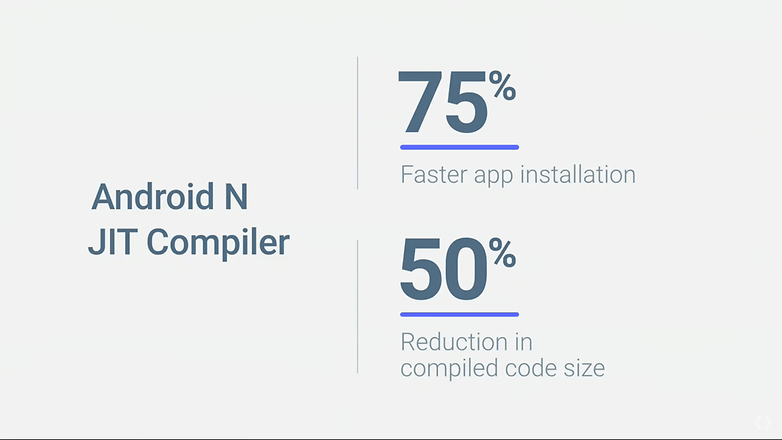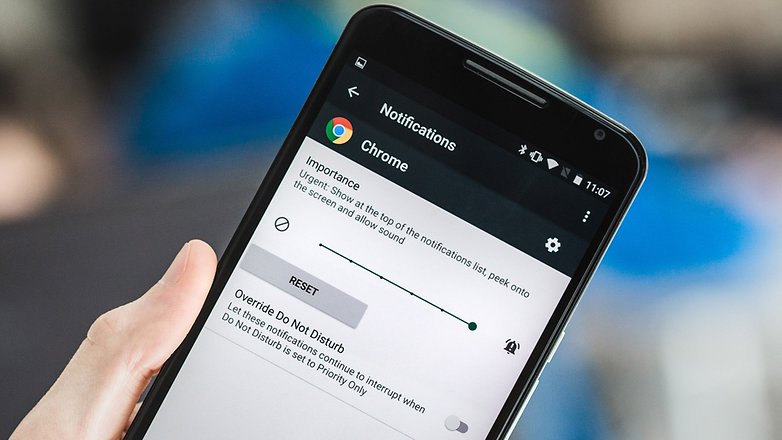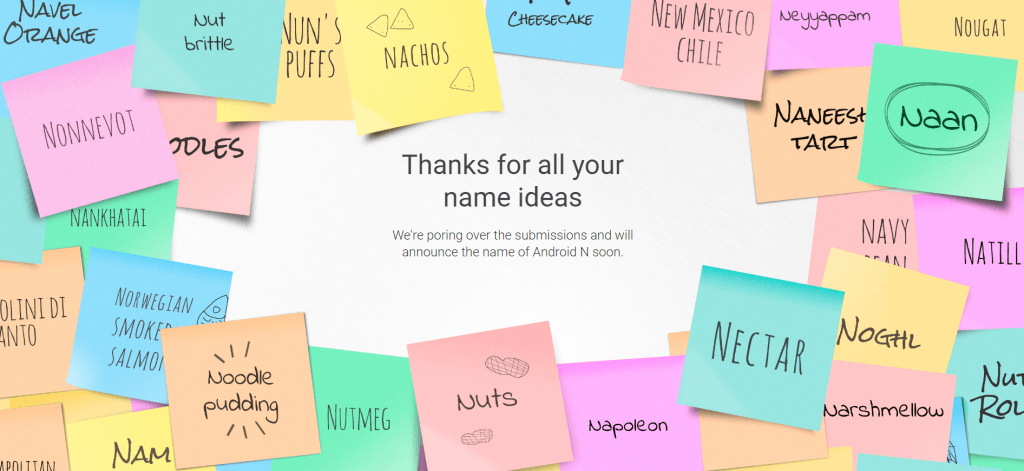Android Nougat 7.0 Release
What performance and security updates can I expect?
Performance wise, Google has focused heavily on graphics and run-time. In fact, it’s introduced the new Vulkan 3D graphics API, which has a much lower CPU and allows developers to squeeze more much graphical detail into frames. Better yet, the introduction of the JTI Compiler, means your app installs will be 75% faster, and the compiled code size will be reduced by 50%. Android Nougat also has new platform features that aim to optimise battery life and memory consumption such as Doze – see below – and new background optimisations.
For security, Android Nougat introduces file-based encryption, media framework hardening and seamless updates. In particular, these ‘seamless updates’ mean that your phone will silently download new software images in the background and prepare them for the next time you restart your device. It’s also been reported that Android Nougat will stop password-reset ransom-ware,
“The new operating system will no longer allow users or software to invoke a command that clears already-set passwords.”
However, in order to protect your device, a password will still need to be set in the first place.
What are the key new features?
Multi-Window support
Nougat introduces Multi-Window mode, which works on both tablets and phones and mirrors what you can currently get on some Samsung and LG devices. The new feature is easy to operate, you’ll simply need to hold the Overview (square button) to activate Multi-window mode with the primary app you want to have open. The screen splits in half and the other half displays a rotating carousel of recent apps. You then select the secondary app you want to use, which fills the remaining half of the screen. Or — from the homescreen: you can tap the overview button to bring up the recent apps carousel as usual, then, tap and drag one of the cards over to the edge of the screen to put it into Multi-window mode.
New notifications panel
The notification panel has been completely re-designed. Icons above the notification shade are now more prominent, and on the far right there is a drop-down toggle to expand the panel. You’ll have the ability to reply to messages and IM via the notifications menu, which appears to have gone system-wide with support for all messaging apps, including WhatsApp. Notifications can also now be ‘stacked’, optimising the space in your notification area. Finally, notifications can be set manually at any one of six levels of importance for each of your apps:
- Blocked – never show notifications
- Min importance – silently show at the bottom of the notification list
- Low importance – silently show notifications in chronological order
- Normal importance – allow these notifications to play sounds
- High importance – peek onto the screen and play sounds
- Urgent importance – show at the top of the notifications list, peek onto the screen and play sounds
Doze mode
The energy-saving Doze mode, designed to kerb excessive power consumption when your phone is laid idle, has been improved in Android Nougat 7.0. Previously in Android Marshmallow, the Doze feature had only worked when your phone was completely undisturbed for a long period of time, for example when you’re sleeping, but now Google says Doze will also save battery anytime your display screen is turned off.
VR support with Daydream
Daydream is a set of a software and hardware standards for creating virtual reality experiences powered by smartphones. Companies such as Samsung and Huawei will be releasing Daydream-ready handsets later in the year, but with the underpinnings already baked into Android Nougat, the experience is expected to be much sweeter.
Native number blocking
You’ll no longer have to look to a third party solution as number blocking will be featured in Android Nougat. The number blocking functionality will prevent calls and messages from blocked numbers getting through, and your block list will survive through restarts and resets of your phone, so even if you wipe your handset, it’ll keep tabs on the blocked numbers when it’s being set up as new.
Why Nougat?
Google has always named it’s Android OS updates after sweet treats and in alphabetical order. So far, Google has released Cupcake, Donut, Eclair, Froyo, Gingerbread, Honeycomb, Ice Cream Sandwich, Jelly Bean, KitKat, Lollipop and Marshmallow. After a public vote open until June 8th on Android’s website, Nougat came out on top over various suggestions including Nutella.
When will Android Nougat be available on my device?
Android Nougat is expected to be available “later this summer”, according to Google. However, when – and if – you get the update depends on the type of phone or tablet you own. Each manufacturer can take time to tweak the OS updates, for example some devices are yet to have the Android Marshmallow update, but if you own a Nexus you can rest assured that the new software will be pushed to these devices first. HTC has also confirmed that it will be bringing Android Nougat to the HTC 10, One A9 and One M9 and Motorola has confirmed the Moto G4 Plus will get Android 7 software in the future. Although other manufacturers have remained tight-lipped, it’s likely that if you have a recent flagship phone or tablet from Sony, Samsung or LG, you’ll see the update rolled out within the first new months of 2017.





